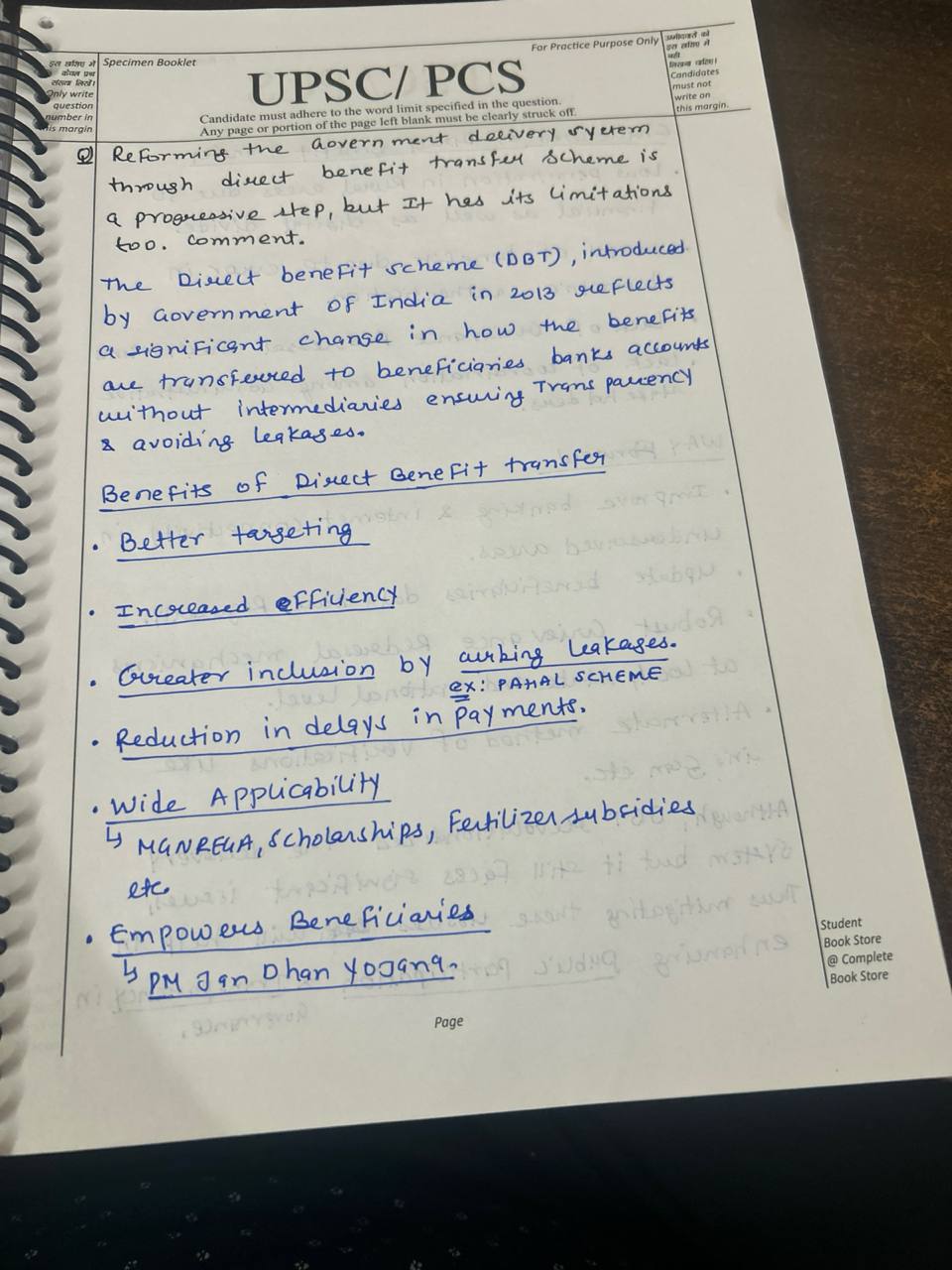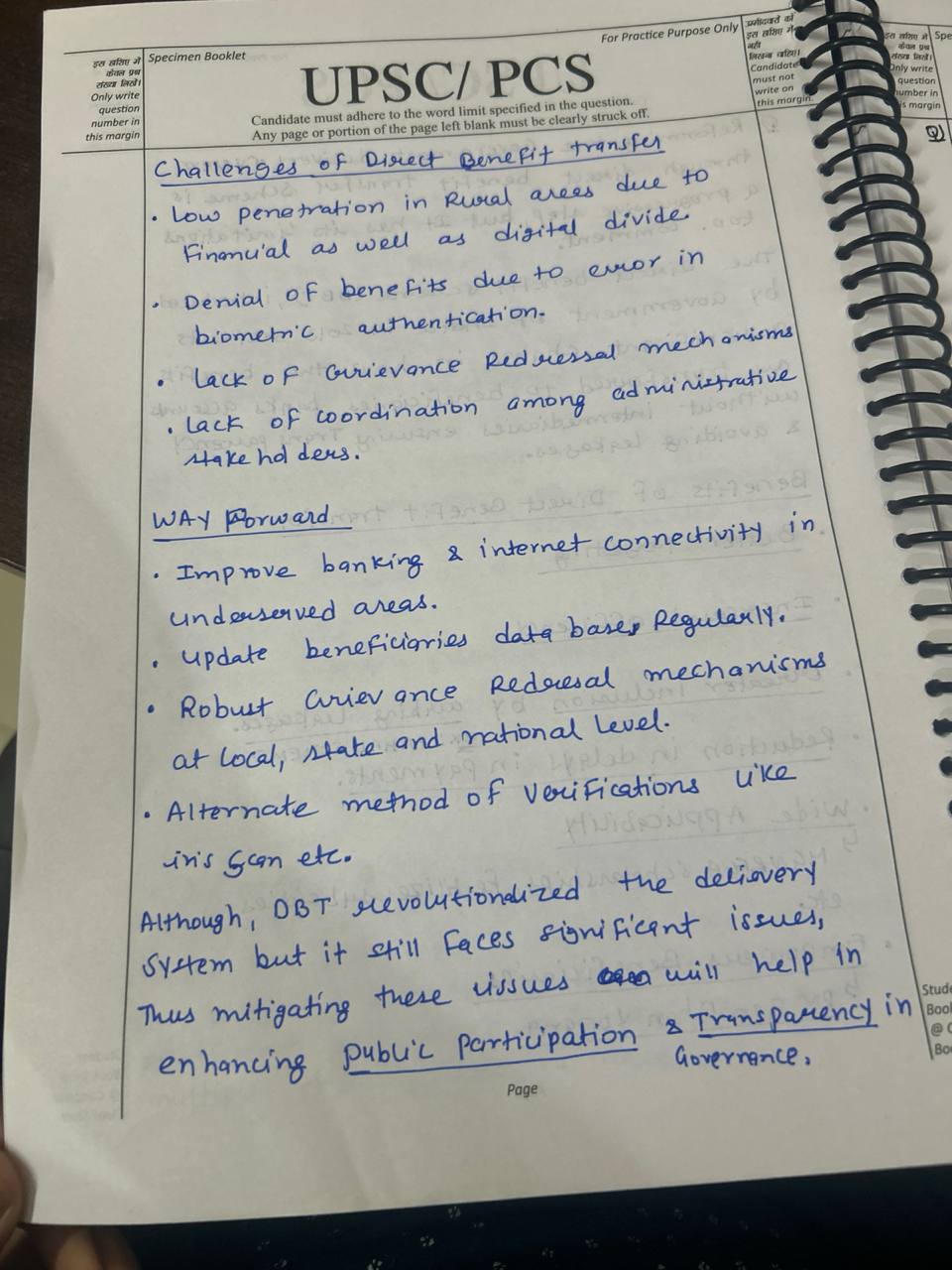Reforming the government delivery system through the Direct benefit transfer scheme is progressive step, but it has its limitations too. Comment.
The RPwD Act or the Rights of Persons with Disabilities Act, 2016, is an important law of India aimed at the safety, rights and dignity of persons with disabilities. It superseded the 1995 legislation, marking a significant step forward in legal advocacy for disability rights. While the act detailsRead more
The RPwD Act or the Rights of Persons with Disabilities Act, 2016, is an important law of India aimed at the safety, rights and dignity of persons with disabilities. It superseded the 1995 legislation, marking a significant step forward in legal advocacy for disability rights. While the act details the provisions the government should include in its planning, it remains a largely legal document that few outside the government are aware of.
Goals of the RPwD Act, 2016
The Act was enacted to comply with India’s obligations to the United Nations Convention on the Rights of Persons with Disabilities (UNCRPD). It is about being treated with dignity, equality and inclusion for people with disabilities. Key aspects of the act are:
Expanded Definition of Disability: The act broadens the definition of what constitutes a disability, covering more types of conditions, including certain learning disabilities, mental illnesses and chronic neurological disorders.
Prohibition against Discriminatory Practices: They cannot discriminate against people with disabilities in education, employment, and access to public services.
Equal Opportunities in All Aspects: The law obliges instituting job quotas in the public sector with special measures for education and training.
Strengthening Accessibility: It mandates both government and private organizations to provide accessible infrastructure, transportation, and communication.
Setting up monitoring and remedy frameworks: The act provides for the appointment of Central Disability Commissioner and State Disability Commissioners, creates mechanisms to redress complaints and punishes infractions.
The Importance of Awareness
A well-intentioned piece of legislation like the RPwD Act, 2016 is grounded in giving people with disabilities the chance to lead their life with dignity, but how far that has been translated depends on different stakeholders who are intrinsically connected to it. This is why awareness is so important:
Understanding the Law: Government workers, educators, employers and citizens must fully understand the law. They must understand the rights of people with disabilities, which parties owe them obligations and how the law is enforced and problems addressed.
Changing Perspectives: Perspective change in how we perception towards disability is a slow process. Raising awareness about both neurodiversity and accepted the nature of differences promotes the collapse of stereotypes, diminishes stigma, and create acceptance.
Training Staff Government employees need to be trained how to apply the law consistently. They must understand the needs of different disabilities, and create policies and programs that are inclusive.
Community Knowledge: People — particularly in areas with more disabilities — need to know their rights and where to get help. This knowledge enables them to self-advocate and seek help.
Collaborating: Awareness helps government, NGOs, and businesses to cooperate to support people with disabilities, exchanging best practices, resources, and skills.
Current Challenges
There are, however, several challenges to implementing the RPwD Act, 2016:
Awareness Deficiency: The act and its provisions are unknown to many of the government officials, educators, and employers leading to frequent violations and poor implementation of the act.
Lack of Training: Training for all government workers is short. Officials also may not know how to implement the act properly or know how to best support individuals with disabilities without proper training.
Stigma and Discrimination: Societal attitudes toward disability are major barriers. Despite legal protections, direct or indirect discrimination and stigma can underwrite barriers to the enjoyment of rights for persons with disabilities.
Shortage of Resources: There is a lack of financial and human resources available for implementation of the act Most organizations lack the resources or staff to develop inclusive infrastructure or provide specialized training.
Fragile Monitoring and Enforcement: There is no strong oversight机制。 Nothing guarantees that the act’s provisions will be enforced uniformly in different regions and in different industries, without robust supervision.
Methods to Enhance Awareness
With this in mind, the following strategies can help educate government employees and members of the public to address these issues:
Also Read: Integrated Training Sessions: Initiate in-depth training of government officials, teachers, employers and healthcare providers regularly. Such programs should also clarify legal requirements, disseminate best practices, and underscore the importance of being inclusive.
Public Awareness Campaigns: Implement mass media, community outreach, and educational initiatives to raise awareness of the rights of people with disabilities. Develop these campaigns for target audiences and highlight best practices and success stories.
School Curriculums: Include disability in school curriculums for education and inclusion at a young age This includes education about diverse disabilities, the rights of people with disabilities, and a need for accessibility.
Collaboration with Civil Society: Recognizing that the immediate stakeholders of the SDGs are NGOs, disability rights groups and advocacy organizations, and work with them to create awareness. They need their insights and first-hand experience to develop more effective policies and programs.
Strengthening legal and administrative structures: Better empower the Central and State Disability Commissioners and other legal institutions so that every law enacted has force and that grievances can be resolved expeditiously.
Policy: Institute omnibus public policy targeting inclusion of disability rights in all government programs. Make infrastructure projects, healthcare services, and social programs available to all.
Final Thoughts
The enactment of the Rights of Persons with Disabilities Act, 2016 is a milestone within the records of incapacity rights within the Indian subcontinent. But working together is key to making an impact. Education and training on disability rights for people within government as well as members of the public. Implementing awareness programs and integrating these rights into every social fabric are crucial. Not just a law that looks good on paper, but moves on to change the lives of all those with disabilities.
See less


See less